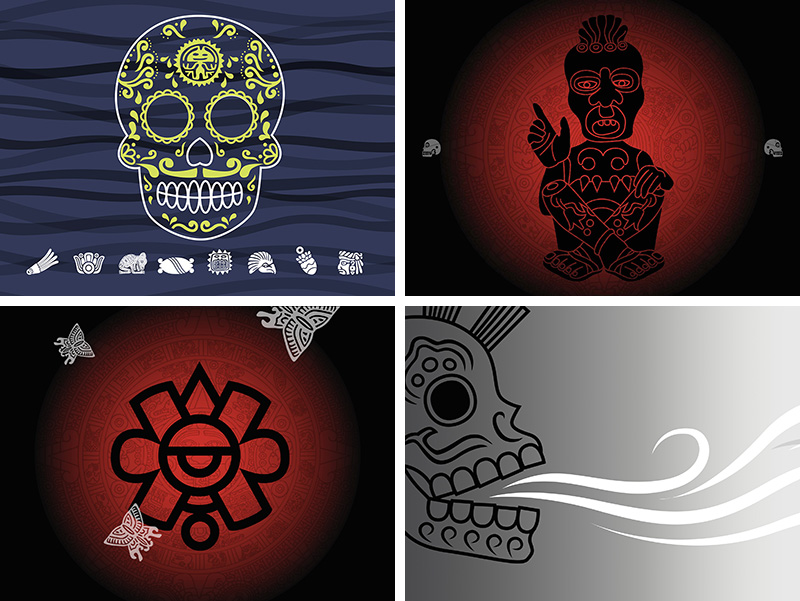
March 22, 2010
Es Tiempo

A jacaranda tree, which blooms every spring, reminds women to have an annual screening for cervical cancer
Hispanic women, for example, lag behind in screening numbers, although cervical cancer tends to occur in Hispanic women at a rate more than twice that of non-Hispanic white women, according to the American Cancer Society. The Es Tiempo (“It’s Time”) project, a collaboration between DesignMatters at Pasadena’s Art Center College of Design and the University of Southern California’s Keck School of Medicine and Annenberg School for Communication and Journalism, addresses this disparity with a broad-based communications and outreach campaign to encourage Hispanic women in underserved communities in east Los Angeles to seek out early screening.
The project started with the fundamentally wrong assumption that Latinas lacked sufficient awareness of cervical cancer and its consequences. Research revealed that among Hispanic women, “there is a broad level of knowledge but testing is not at the top of their priority list,” says Dr. Lourdes Baezconde-Garbanati, associate professor in preventive medicine and sociology at USC, who was involved in the project. In focus groups that examined resistance to getting tested, women identified a number of barriers: they don’t trust doctors (if they have a relationship with one at all) and don’t feel comfortable discussing reproductive health issues with them; they consider Pap tests uncomfortable and undignified; many didn’t know where to go for screening, and even if they did, couldn’t afford a test.

A sidewalk strewn with petals invites women into a free clinic
The findings upended what might have been a more conventional “reminder” ad campaign featuring a doctor in a white coat, warnings about cervical cancer and admonitions to get a Pap test, or face the dire consequences. “These women are not doctor worshipers,” explains Elena Salij, an instructor in Art Center’s advertising department, who was involved with Es Tiempo. “They don’t think that doctors have magical powers.” Instead, if Hispanic women have a medical problem, Salij adds, they’re more likely to ask their mother, sister or a friend for help.
As a result, team members concluded that a single, strong visual identity should symbolize the program, one that was not medical-related and that had a vibrant female component. After studying the visual culture of east L.A. and Spanish-language television ads, the DesignMatters students — who also conducted mock Pap tests on medical dummies at the USC cancer center — chose as a logo the jacaranda tree, which puts out purple flowers in southern California for a short time each spring. “It’s very feminine and very beautiful,” Salij says about the tree logo, “and when [the tree] blooms every year it will become an annual reminder that it’s time to get tested.”
The stylized tree and the color purple as a graphic design element will be used for wall murals, posters, videos, maps to clinics at bus shelters and other aspects of the campaign, including purple gowns and booties to be worn during the Pap test. Purple dots can also be painted on sidewalks leading to clinics, where women can obtain low or no-cost tests. Like the pink-ribbon breast cancer campaign, the purple tree and associated elements will be a discrete way for Hispanic women to talk about reproductive health. “We knew that if we put up a sign saying “free Pap test,” they wouldn’t go,” Salij says.

Es Tiempo’s ubiquitous symbol sends its own clear message. Now women “won’t have to say Pap smear anymore”
Financial incentives are another crucial element of the campaign, which is expected to launch later this year. To ease the expense of getting tested and taking time off from work, a gift card program (perhaps from Visa) is envisioned that rewards women at stages of the testing process: $20 for getting the test, another $10 for calling back for the results and $5 for persuading a friend to be tested. Other fund-raising tie-ins might include deals with fashion and cosmetics companies for merchandise (think purple nail polish) that prominently displays the purple jacaranda tree logo. With that ubiquitous symbol as a unifying theme, “we won’t have to say Pap smear anymore,” notes Dr. Baezconde-Garbanati. “When and wherever women see the purple tree they will know what it means and think Pap smear.”
Art Center College of Design’s Es Tiempo project team: Phillip An (illustration major), Mark Brinn (graphic design major), Chris Lack (graphic design major), Tracy Hung (graphic design major), Haelee Kang (graphic design major), Lucia Loiso (photography major), Camille Ontiveros (fine arts major), Elena Salij (lead faculty), Maria Moon (adjunct faculty)
Observed
View all
Observed
By Ernest Beck

 Ernest Beck is a New York-based freelance writer and editor.
Ernest Beck is a New York-based freelance writer and editor.


